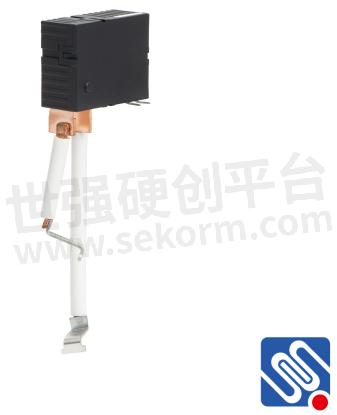Latching Relays in Metering Applications

Today's latching relay suppliers must adapt to the requirements of the solid-state metering industry.
The main driving force is the cost, size, performance, and reliability of the metering equipment. For electronic equipment, the pressure lies in higher integration, less power consumption, and smaller circuit board space. In this article, MEISHUO will introduce the latching relays in metering applications.
The disconnect device and its connector must be suitable for the current sensor technology and the bus carrying the load current.

Energy management applications require the latest latching relays with the following characteristics:
Low energy requirement for coil drive (only short pulse can be switched)
High isolation between control and load
High isolation between disconnected contacts
Low contact resistance
High overcurrent margin (fault current, short circuit)
Long service life (switching operation under load)
Low overall implementation cost
Integrated current sensor function for metering
In order to limit the energy required for operation, a magnetic latch mechanism is used.
Permanent magnets hold the contacts in place through the actuator. The direction of the current pulse flowing through the drive coil pushes the magnet into the correct position until the opposite direction pulse is applied to the coil.
The high isolation between the drive coil and the contacts is inherent to the relay. Isolation and overcurrent requirements for disconnect devices require expensive semiconductor solutions.
High overcurrents will generate magnetic force on the contacts. This force pushes the contacts away. If the contact pressure of the drive system is exceeded, the contacts will open and the arc will destroy the contacts.
Therefore, the latest type of latching relay uses the current flowing through the conductor to the contact to compensate for this effect.
The load current passing through the conductor loop generates a magnetic field around the contact spring and the bus bar connecting the load. The resulting force creates additional contact pressure. The contact force must be well balanced, especially under high fault current conditions.
The composition of the contact material affects the life of the latching relay and affects the ability to switch to high fault currents.
It is important that the contacts cannot be welded by arc discharge. The contact material with high carbon content has good making and breaking operation performance under high fault current. For this reason, the contacts in the circuit breaker contain a relatively large amount of carbon.
However, high carbon content increases contact resistance and reduces the amount of switching operations under load.
Therefore, in order to achieve a good balance between contact resistance and withstand fault current, the contacts in the latching relay contain oxides.
The maximum contact resistance of a 100A relay is 500μOhm.
When the load current is 100A, the power consumption is 5 watts.
For relays with currents exceeding 100 A, special contact arrangements are required to minimize power consumption.
The predictable switching time of the latest generation of latching relays allows controlled switching during the zero-crossing period of the on-voltage and the zero-crossing period of the off-current.
This can extend the life of the relay and reduce the risk of arcing under fault conditions (short circuit on the load side).
From the concept stage to delivery to production, the typical development cycle of a new relay takes approximately 1.5 years.
Most of the initial calculations are computer-based, requiring high expertise and experience in this field. Selected parts of the relay are individually constructed and tested. High precision requirements mean that the first complete prototypes have been manufactured using tools.
Fine-tuning and optimization usually require one or two iterations. Overcurrent testing is performed in specialized agencies and is very expensive, so it must be planned carefully to avoid unnecessary repetition.
- +1 Like
- Add to Favorites
Recommend
This document is provided by Sekorm Platform for VIP exclusive service. The copyright is owned by Sekorm. Without authorization, any medias, websites or individual are not allowed to reprint. When authorizing the reprint, the link of www.sekorm.com must be indicated.

































































































































































































































































































































































































































































































































































































































































































































































































































































































